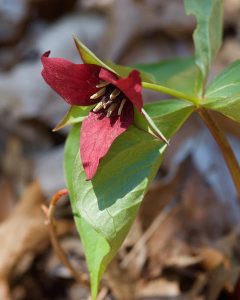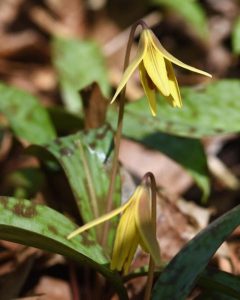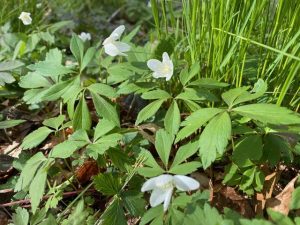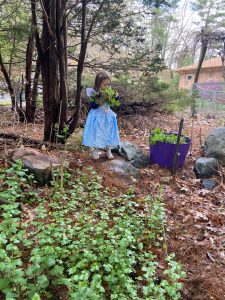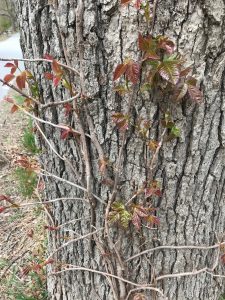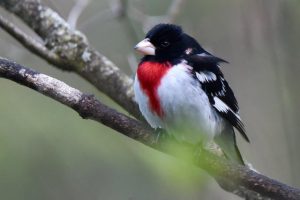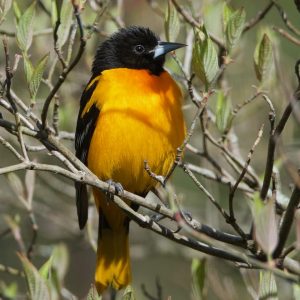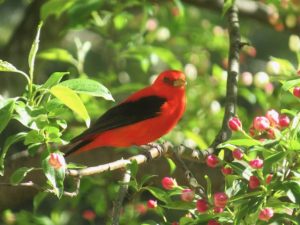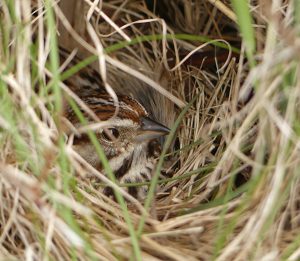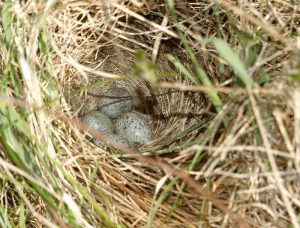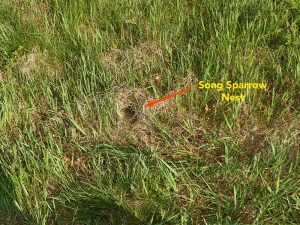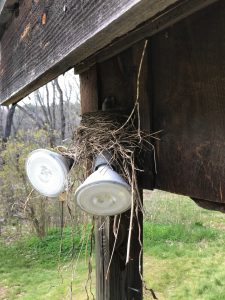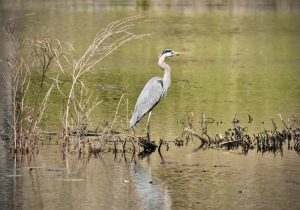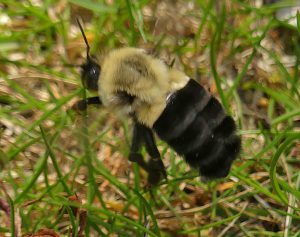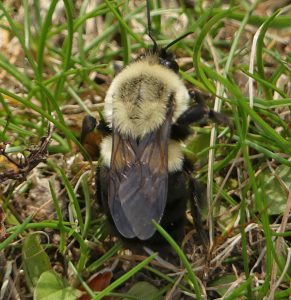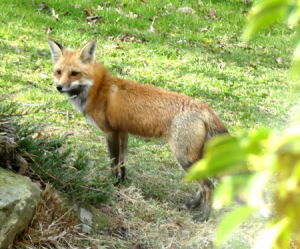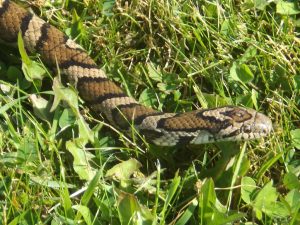Written by Gwyn Loud for the Lincoln Land Conservation Trust. She welcomes your sightings and questions at 781-259-8690 or gwynloud555@gmail.com.
If April showers bring May flowers we should have plenty of flowers this month. April was wet, cold and windy, with near-record low temperatures for the month and even some snowflakes. At least the rain and cold kept the forsythia, daffodils, and marsh marigolds blooming longer than usual. The weekend of May 1 and 2 brought some brief welcome warmth (75º F!) and sunshine, spurring trees and shrubs to leaf out and flower but we were back into the polar plunge on May 9, with more snowflakes. White and purple violets of several species are flowering now, as well as gill-over-the-ground (aka ground ivy). Celandine, dandelions, and buttercups bring yellow blossoms to lawns and roadsides and in the woods you may find spring beauty, wood anemone, wild oats, trout lily, and red trillium. Garlic mustard is flowering, so be sure to pull it before it goes to seed. In bud but not yet in bloom are Canada mayflower (aka wild lily-of-the-valley) which will carpet the woodland floor, and other woodland wildflowers such as nodding trillium, Jack-in-the pulpit, and maple leaf viburnum, a shrub. Poison-Ivy is leafing out now, with young reddish leaves. May is also the month we watch for the beautiful pink lady’s slippers.
Every day brings new migrating birds, some to stay here to nest, others on their way north. Rose-breasted grosbeaks and Baltimore orioles, colorful favorites, have returned, as well as ruby-throated hummingbirds, so it is time to put out your hummingbird feeder if you have not already done so.
This tiny bird, weighing about as much as a nickel, flies non-stop 500 miles across the Gulf of Mexico with wings beating up to 80 times per second. To prepare for the flight, the hummingbirds double their body mass by feeding on insects and nectar. The males, migrating earlier than the females, are polygamous and after mating, play no part in building the nest or caring for the young.
Other recent Lincoln arrivals which breed in our area, given the right habitat, include blue-gray gnatcatchers, house wrens, barn swallows, hermit thrushes and veery, ovenbirds, Eastern kingbirds, gray catbirds, yellow warblers, prairie warbler, Nashville warblers, Louisiana waterthrushes, a spotted sandpiper, savannah sparrows and turkey vultures. Bobolinks, one of our longest-distance migrants, have returned from their wintering grounds in southern South America to Farm Meadow and a few other fields in town. It is impressive to realize that first-time nest builders know how to construct a nest and what materials to use with only instinct as instruction, and of course they do it primarily with just a beak. No hands or tools! Several residents have photographed (carefully) nearby nests of song sparrows, robins, and bluebirds.
Birders have spotted migrating ruby-crowned kinglets, a couple of field sparrows, yellow-rumped warblers, rusty blackbirds, a black-throated blue warbler, blue-headed vireos, a rarely-seen cerulean warbler, and a Wilson’s snipe, all headed farther north to breed. White-throated sparrows, with us all winter, are still here and singing their plaintive “Poor Sam Peabody Peabody Peabody” song but within days they will disappear. You might see them again in the woods of New Hampshire or Maine this summer. Over the next couple of weeks we can expect to see later migrants such as wood thrushes, scarlet tanagers, and several more species of warblers, flycatchers, and vireos. We just need some nice warm southern winds to help them get here!
One observer wrote about witnessing a tussle between a bald eagle and an osprey. The eagle was sitting in the Codman North field eating a prey item (perhaps a fish caught by the osprey), and the osprey was flying around, protesting, but eventually they flew off in different directions, the eagle headed towards Mt. Misery/Fairhaven Bay. Bald eagles have made a wonderful comeback in New England in recent years.
Spring is the season when one is most likely to find a baby bird on the ground or perhaps what seems to be an abandoned baby mammal. In nearly all cases it is best to leave it alone as, unknown to us, the parent is probably nearby, well aware of the situation and will take care of it. For more information on what to do, check out
https://www.newildlife.org/2019/07/what-to-do-if-you-find-a-baby-animal/
As the weather warms, insects become more active. I have been swatting black flies in the garden and even a few mosquitoes. Many birds which eat seeds in the winter switch to a richer diet of insects in other seasons. I was astonished to read that researchers at the University of Delaware discovered that it took between 5000 and 9000 insects for chickadees to raise one brood! Have you seen a lot of bumble bees recently, cruising along the ground? These are queens of the common Bombus impatiens, looking for holes to use as nest sites. They mated in the fall before all other members of their colony died. The LLCT’s pollinator project is making us all more aware of the many species of wild bees which we can encourage with pollinator-friendly plantings.
Amphibians are also more evident in May, especially by sound. The chorus of spring peepers continues on mild days and evenings and recently naturalist Norman Levey recorded them as well as gray tree frogs, American toads, and pickerel frogs, all singing at the same time on a warm evening.
Listen to his recording here:
The last frogs we will hear as we move towards June will be the green frogs, with their banjo-like “glunk” and the bullfrogs, giving a deep “jug-a-rum”. I have seen several garter snakes (harmless) slithering through the grass and a dead Eastern milksnake. This is turtle season too: painted turtles are easy to spot sunning on logs in ponds, and snapping turtles may be seen crossing roads on their way to lay eggs in sandy soil. One silver lining of the pandemic is that fewer turtles or other animals will be squashed on roads by cars this year, thanks to little traffic.
Our common mammals are all in stages of raising young. Observers have sent reports of red foxes from many parts of town, chipmunks seem numerous, and woodchucks, coyotes, deer, raccoons, and fishers have all been reported. For the first time a black squirrel was seen at Drumlin Farm and I was happy to see a couple of bats flying over our garden at dusk, catching insects on the wing.
Please enjoy Lincoln’s beautiful trails, and be sure to check for ticks when you get home. As our sheltering-in-place continues, once again I wish you the comfort and joy of observing nature all around us.
© Gwyn Loud


